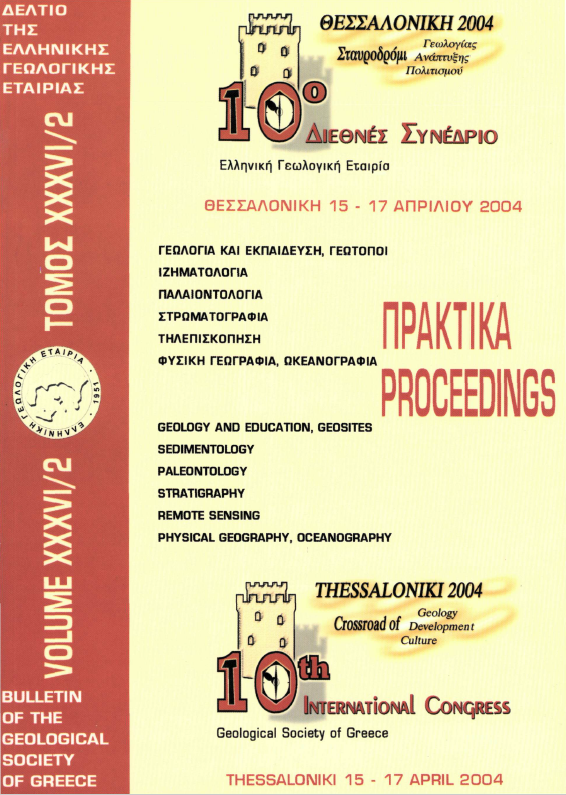QUATERNARY CALCARENITE ("POROS") OF MYKONOS, DELOS AND RHENIA, CYCLADES ISLANDS, GREECE
Résumé
Outcrops of friable calc-arenite of late Quaternary age, known as Poros rock, from Mykonos, Rhenia and Delos, are characterized sedimentologically and their cements are studied in thin section. Calcarenites of beach, coastal eolian dune, and pedogenic alluvium origin are distinguished sedimentologically. Beach calcarenite shows marine cementation by a uniform rim of micrite and bladed Mg-calcite. Some eolian dunes show precipitation of needle aragonite, probably from sea spray, but the dominant cements are sparry calcite from groundwater and vadose zone deposition of irregular micrite with meniscus and gravitational textures. Pedogenically cemented alluvium shows the characteristics of caliche, such as rhizoliths with clots and globules of micrite and circumgranular cracking. One outcrop of calcarenite from Panormos Bay in Mykonos shows beach fades at +2.5 to +4.0 m above present sea level, overlying cemented debris flow deposits. This occurrence is interpreted as Tyrrhenian in age (isotopie stage 5e) and implies regional long-term subsidence of 2 cm/ka, consistent with the lack of marine terraces in the area. Archeological sites on Delos show irregular variations of sea level of about 1 m in the past 2.5 ka, probably related to movement on faults.
Article Details
- Comment citer
-
Varti-Mataranga, M., & Piper, D. W. (2018). QUATERNARY CALCARENITE ("POROS") OF MYKONOS, DELOS AND RHENIA, CYCLADES ISLANDS, GREECE. Bulletin of the Geological Society of Greece, 36(2), 725–731. https://doi.org/10.12681/bgsg.16803
- Rubrique
- Palaeontology, Stratigraphy and Sedimentology

Ce travail est disponible sous licence Creative Commons Attribution - Pas d’Utilisation Commerciale 4.0 International.
Authors who publish with this journal agree to the following terms:
Authors retain copyright and grant the journal right of first publication with the work simultaneously licensed under a Creative Commons Attribution Non-Commercial License that allows others to share the work with an acknowledgement of the work's authorship and initial publication in this journal.
Authors are able to enter into separate, additional contractual arrangements for the non-exclusive distribution of the journal's published version of the work (e.g. post it to an institutional repository or publish it in a book), with an acknowledgement of its initial publication in this journal. Authors are permitted and encouraged to post their work online (preferably in institutional repositories or on their website) prior to and during the submission process, as it can lead to productive exchanges, as well as earlier and greater citation of published work.



